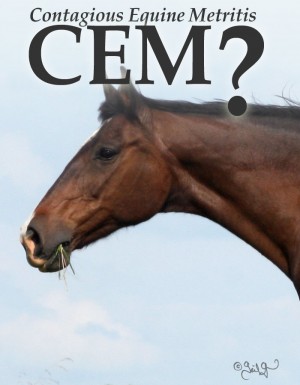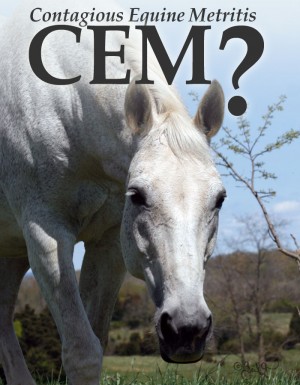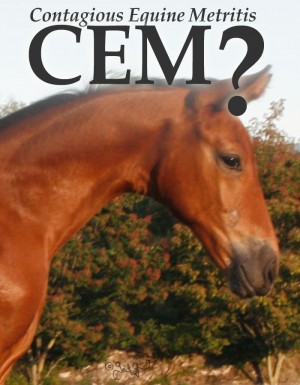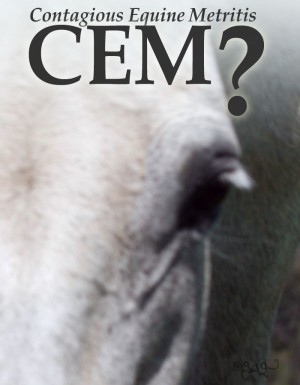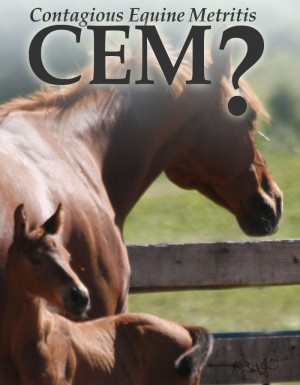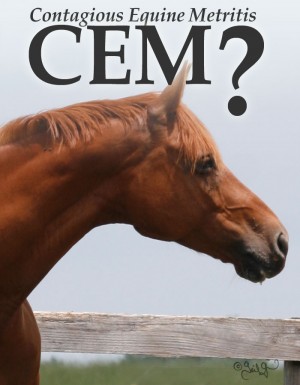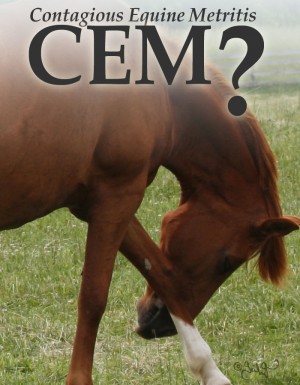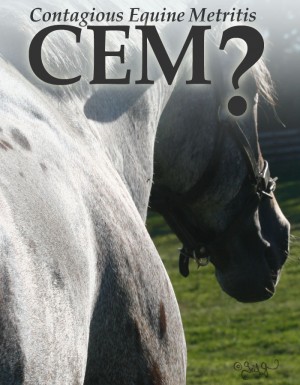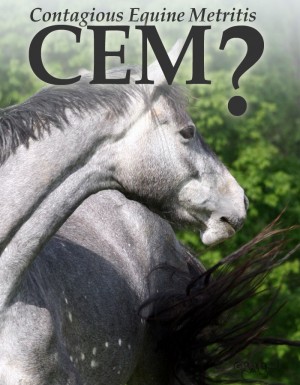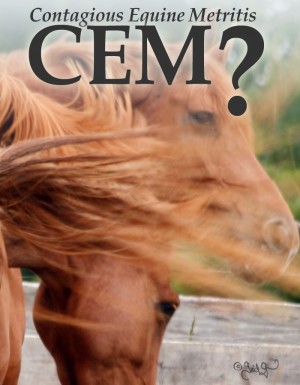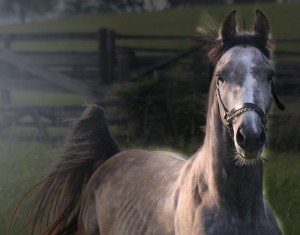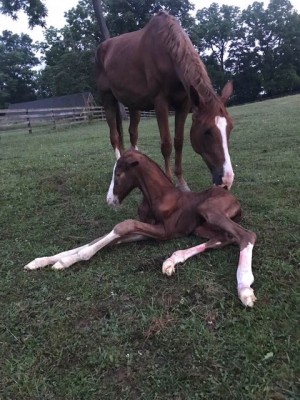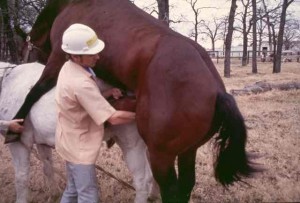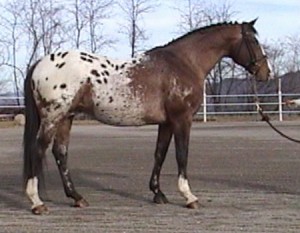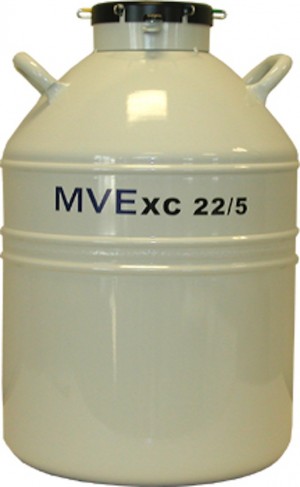FAQ: CEM testing for your mare?
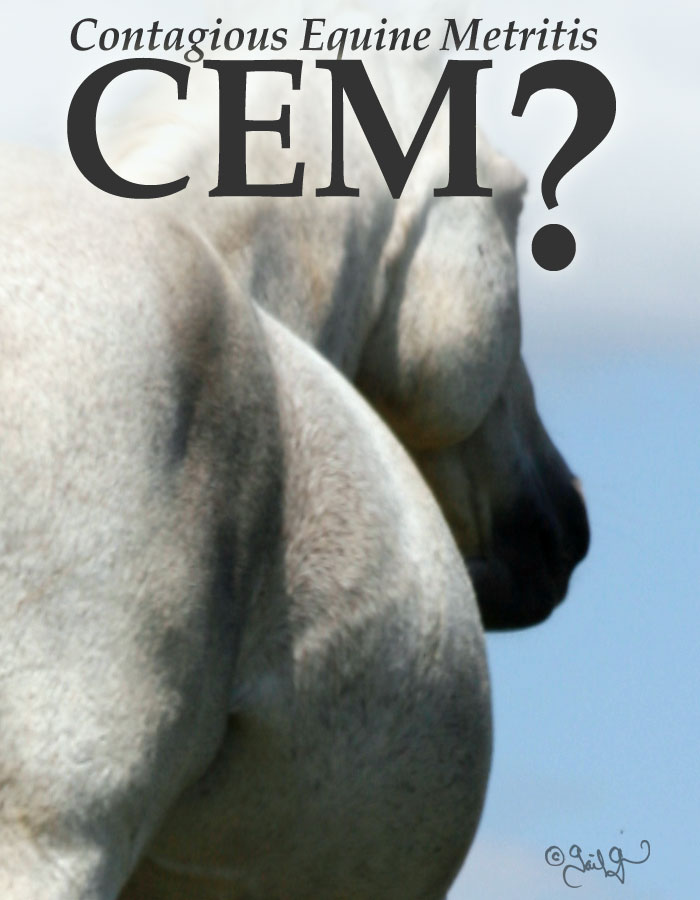
The testing requirements for CEM Quarantine include one negative serological (aka, blood) test, and three sets of bacteriological culture for CEM submitted to the appropriate (USDA approved) diagnostic laboratory which are then determined to be negative for the CEM causative agent. The typical protocol is as follows.
Day 1 (or on the earliest working / weekday after arrival) : collect the first set of cultures and blood/serum for CEM complement-fixation (CF) serological testing with these samples delivered to the diagnostic laboratory; the cultures must be received and processed by the bacteriology lab within 48 hrs of collection.
There must be a minimum time of 72 hrs between cultures being collected.
Day 4: collect the second set of cultures
Day 7: collect the third set of cultures which also includes cervix or endometrium (aka, uterine)
The normal protocol is to start post-culture CEM treatments (aka, wash & pack treatments for 5 consecutive days) seven (7) days after the third set of cultures were obtained. This allows sufficient time for the diagnostic laboratory to determine the no isolation made or negative status of the third and final set of cultures. A minimum 7-day culture period is required by USDA guidelines before declaring any CEM culture to be no isolation made (aka, negative). However, the mare may begin wash & pack treatments as early as the day after the third set of cultures is obtained. This is referred to as the early release or short protocol. In this circumstance, there will be no information from the diagnostic laboratory that the third set of cultures is negative or no isolation made. In some situations, one (or more cultures) may be complicated by overgrowth or contamination of other bacteria or yeast making a negative test result difficult or impossible to determine; this will make a re-culture necessary. In even more infrequent situations, a positive culture result may be obtained within the 7-day post-culture period. In either of these situations, if the mare has already started the wash & pack treatments, the mare must have a 21-day rest period before she can start over with the 3 sets of culture sequence set forth above. This will require that the mare remain in CEM Quarantine for both the added 21-day rest period and the subsequent CEM protocol which must be repeated. The mare owner will be responsible for all additional fees including diagnostic laboratory, State Veterinarian (time and travel), additional quarantine facility days and qualified / accredited veterinary fees.
Only when the mare has had three sets of cultures obtained and reported by the diagnostic laboratory as no isolation made (aka, negative), a negative serological (CF) test, and 5 consecutive days of wash & pack treatment are completed, will the mare be eligible for release from CEM Quarantine; release from CEM Quarantine may only be issued by the State Veterinarian.
A modified version of the early release CEM protocol is to wait either 3 or 4 days after the third of cultures is obtained and submitted to the diagnostic laboratory before starting the wash & pack treatments. This allows the lab at least those 3 or 4 additional days to monitor the cultures in process and intervene with the planned wash & pack should a a possible over-growth, contamination, or positive culture interpretation be observed.
Planned or minimum time periods for CEM Quarantine Protocol options:
The Early Release Option: 12 to 14 days
The Modified Early Release Option: 14 to 17 days
The Traditional Option: 17 to 21 days
In any and all of these CEM Quarantine period options, weekends and holidays may impact diagnostic laboratory work days and State Veterinarian availability and can inadvertently extend the CEM Quarantine duration by 1 to 4 days. The day of arrival of your mare at the quarantine facility as well as her time of day arrival at the facility may also have a similar impact on the time required to complete the Quarantine period and its minimal requirements. Discuss these options in advance with Dr. Ley, as any early release option will also require agreement with the State Veterinarian, and the mare owner must also sign a liability release acknowledging the potential risks and expenses associated with such a decision.
Dr. William B. Ley DVM, MS, DACT CEM Quarantine
Related Links
Allowed: 64M/67108864KB.
Current: 7804KB. Peak: 7873KB.


